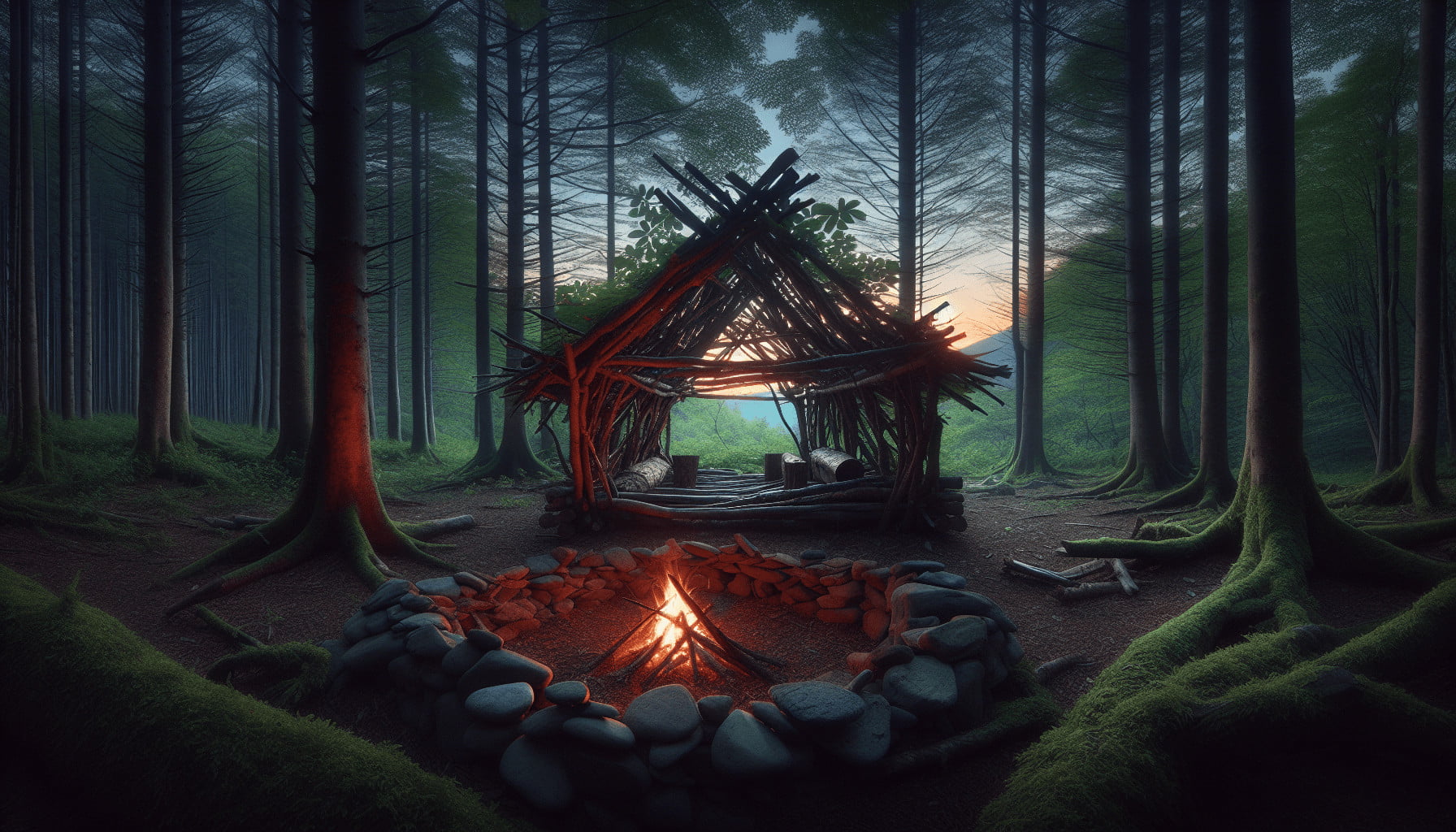Have you ever found yourself in a situation where you wished you knew more about building a shelter for your family? Whether you are out camping, caught in an emergency, or simply indulging in a fun outdoor activity, knowing how to build a family shelter is an invaluable skill. This article will guide you through the essential tips and tricks of shelter building for families.

Understanding the Basics of Shelter Building
Before diving into the nitty-gritty of building a shelter, it’s crucial to understand the basic principles that will guide your efforts. A well-built shelter provides protection from the elements, keeps you warm, and ensures a good night’s sleep.
The Importance of Shelter
A shelter protects you from rain, wind, sun, and other environmental factors. It helps regulate your body temperature and can also provide psychological comfort, making you feel secure and cozy.
Types of Shelters
There are various types of shelters you can build, depending on the available materials and the environment you find yourself in. Here are a few common types:
- Lean-To Shelter: Uses branches and foliage, leaning against a tree or rock.
- A-Frame Shelter: Similar to a lean-to but provides more coverage.
- Tree Shelter: Built around a sturdy tree trunk.
- Snow Shelter: Ideal for winter conditions, involves digging into deep snow.
Here’s a table summarizing the basic attributes of these shelter types:
| Shelter Type | Materials Needed | Ideal Conditions | Pros | Cons |
|---|---|---|---|---|
| Lean-To | Branches, Foliage | Forest, wooded areas | Easy to build | Limited protection |
| A-Frame | Branches, Leaves | Forest, general use | Offers better coverage | Requires more material |
| Tree | Branches, Rope | Wooded areas | Utilizes stable structure | Can be complex to build |
| Snow | Snow, Shovel | Winter, snowy areas | Excellent insulation | Time-consuming |
Choosing the Right Location
The success of your shelter depends greatly on its location. Choosing the right spot can mean the difference between a comfortable night and a miserable experience.
Factors to Consider
- Terrain: Look for flat, elevated ground to avoid flooding.
- Wind Direction: Position your shelter to shield against prevailing winds.
- Water Source: Stay close to a water source, but not so close that you risk flooding.
- Safety: Avoid areas prone to falling branches, flooding, or attracting wildlife.
Gathering Materials
Materials will depend on your environment, but there are some universally useful items. Understanding what to gather and how to efficiently collect these materials will save you time and effort.
Natural Materials
- Branches and Sticks: These will form the main structure of your shelter.
- Leaves and Grass: Useful for insulation and waterproofing.
- Rocks and Stones: Can be used for structural support or creating a fire ring.
Man-Made Materials
- Tarp or Plastic Sheets: Great for waterproofing and quick shelters.
- Rope or Cordage: Essential for binding and securing materials.
- Tools: A knife, saw, or shovel can significantly speed up the building process.
Building Techniques
Building a shelter involves more than just stacking sticks. Understanding the proper techniques will ensure your shelter is sturdy, effective, and comfortable.
Constructing a Lean-To Shelter
- Find a sturdy tree or rock as your main support.
- Lean long branches against the support in one direction.
- Cover the framework with smaller sticks, leaves, and foliage for insulation.
- Secure the materials with rope or cordage, if available.
Constructing an A-Frame Shelter
- Create a ridgepole between two trees or large rocks.
- Lean branches against the ridgepole on both sides, forming a triangular shape.
- Layer smaller branches and leaves on the framework for added insulation.
- Anchor the structure with rocks or stakes to prevent collapse.

Tips for Insulation and Waterproofing
Ensuring your shelter remains dry and warm is critical, especially in harsh conditions. Effective insulation and waterproofing will make your shelter far more comfortable and safe.
Insulating Your Shelter
- Use natural materials such as dry leaves, grass, and pine needles for insulation.
- Layer these materials both inside and outside to trap heat.
- Consider your clothing and sleeping gear, using them to add extra warmth.
Waterproofing Techniques
- Overlay materials in a shingled pattern to allow water to flow off.
- Utilize tarps or plastic sheets over the structure for added protection.
- Dig drainage ditches around your shelter to divert water away.
Building a Fire for Warmth
A fire near your shelter provides warmth, boosts morale, and can be used for cooking. Knowing how to safely integrate a fire into your shelter setup is essential.
Choosing the Right Spot for Your Fire
- Keep a safe distance from your shelter to avoid accidental fires.
- Use rocks to create a fire ring, containing the fire and reflecting heat.
- Have water or sand nearby to quickly extinguish the fire if necessary.
Types of Campfires
Being familiar with different fire-building techniques can be handy, depending on your needs and available resources. Here are some popular types:
- Teepee Fire: Quick to start, good for light and warmth.
- Log Cabin Fire: Long-lasting, provides steady heat.
- Star Fire: Efficient, uses minimal wood.
- Dakota Fire Hole: Concealed, efficient, low smoke.
Here’s a table summarizing these campfire types:
| Fire Type | Pros | Cons | Ideal Use |
|---|---|---|---|
| Teepee | Quick to start, good light | Burns through wood fast | Short-term warmth |
| Log Cabin | Long-lasting, steady heat | Requires more setup | Cooking, long-term fire |
| Star Fire | Efficient use of wood | Requires frequent adjustment | Maintenance-free warmth |
| Dakota Fire Hole | Efficient, low smoke | Requires digging | Stealth, cooking |
Dealing with Emergencies
Building a shelter can also be part of emergency preparedness. Knowing how to act under pressure and keep your cool can be lifesaving.
Emergency Situations
- Sudden Weather Changes: Quickly build a simple shelter like a lean-to for immediate protection.
- Injuries: Have a basic first aid kit on hand and know the basic first aid procedures.
- Food and Water: Ensure you have access to clean water and basic nutrition resources.
Involving the Family
Building a shelter is an excellent family activity, fostering teamwork and practical skills. Engage everyone to make the process enjoyable and educational.
Assign Roles
- Adults and Older Kids: Take on tasks requiring strength and skill.
- Younger Kids: Assign them simpler tasks like gathering leaves or smaller sticks.
- Encourage Collaboration: Make decisions together and value everyone’s input.
Making it Fun
- Turn it into a Game: Create challenges or races for gathering materials.
- Teach Skills Along the Way: Explain the importance of each step to make it a learning experience.
- Celebrate Successes: Once the shelter is built, enjoy snacks or storytelling time inside.
Safety Precautions
Safety should always be at the forefront of your shelter-building efforts. Proper precautions ensure that you and your family remain safe throughout the process.
Preventing Accidents
-
Use Tools Properly:
- Always supervise children using tools.
- Ensure everyone knows how to handle tools safely.
-
Stay Hydrated and Fed:
- Fatigue and dehydration can lead to mistakes and accidents.
- Take regular breaks to eat and drink.
-
Watch for Hazards:
- Be aware of your surroundings.
- Avoid unstable structures and hazardous wildlife.
Post-Building Safety
- Check the Stability: Regularly inspect your shelter for any signs of instability.
- Secure the Perimeter: Ensure your shelter is secure from wild animals.
- Fire Safety: Keep an eye on your fire at all times and ensure it is fully extinguished before sleeping.
Conclusion
Knowing how to build a shelter is a crucial skill for anyone who loves the outdoors or wants to be prepared for emergencies. By understanding the basics, choosing the right location, gathering the appropriate materials, and using the correct building techniques, you can create a safe and comfortable shelter for your family. Always remember to take safety precautions and involve every family member in the process to make shelter building an enriching and enjoyable experience. So, the next time you find yourself in need of a shelter, you’ll be well-equipped to handle the situation with confidence and skill.
